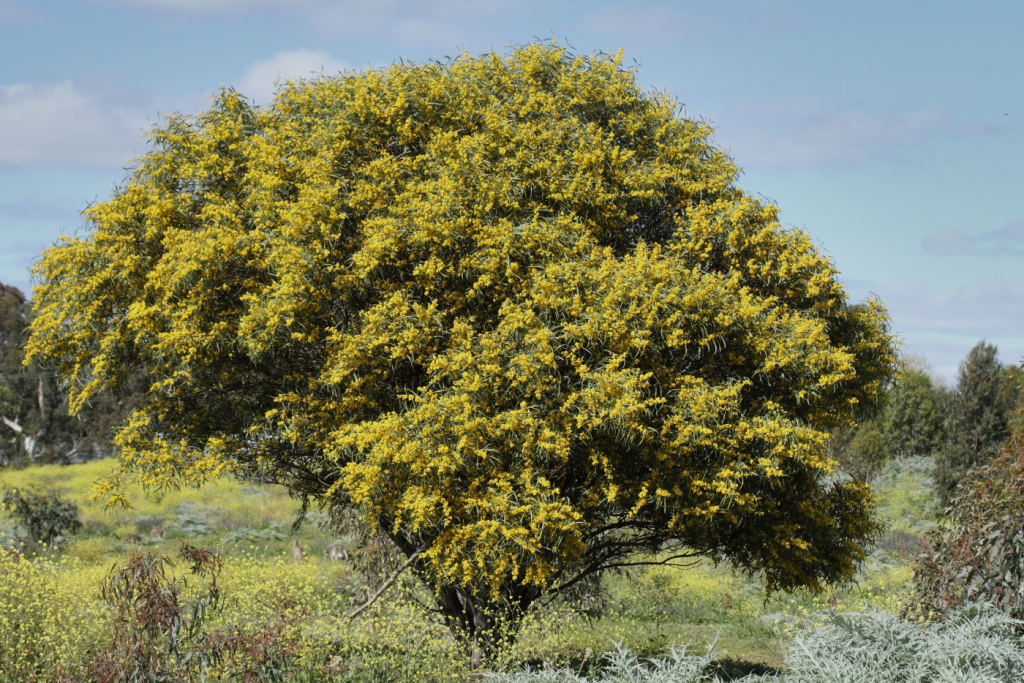Acacia saligna
(Labill.) H.L.Wendl. Orange WattleShrub or tree, usually 2–6 m high; branchlets glabrous, often glaucous when young. Phyllodes often pendulous, linear to lanceolate, usually 8–25 cm long and 4–20 mm wide (often considerably larger towards base of plant), usually tapering towards base and apex, straight or falcate, green to glaucous, glabrous, acute; pinnately veined, midrib prominent; gland at or near distal end of pulvinus; pulvinus 1–2(–3) mm long. Raceme with rachis 0.3–3(–6) cm long, glabrous; peduncles 5–15 mm long, glabrous; heads globular, 25–55-flowered (rarely more), bright orange-yellow; bracteoles minutely fimbriate. Flowers 5-merous; sepals united. Pods linear, usually 8–12 cm long, 4–6 mm wide, glabrous, margins slightly thickened; seeds longitudinal, oblong to elliptic, usually 5–6 mm long, shiny, dark brown to black, funicle short, aril clavate. Flowers Oct.–Nov.
LoM, MuM, Wim, GleP, VVP, VRiv, RobP, MuF, GipP, OtP, WaP, Gold, CVU, GGr, DunT, NIS, HSF. Also naturalised SA, Qld, NSW, Tas; native to WA. Widespread garden-escape in Victoria.
See notes under Acacia pycnantha.
Entwisle, T.J.; Maslin, B.R.; Cowan, R.S.; Court, A.B. (1996). Mimosaceae. In: Walsh, N.G.; Entwisle, T.J., Flora of Victoria Vol. 3, Dicotyledons Winteraceae to Myrtaceae, pp. 585–658. Inkata Press, Melbourne.
 Spinning
Spinning




